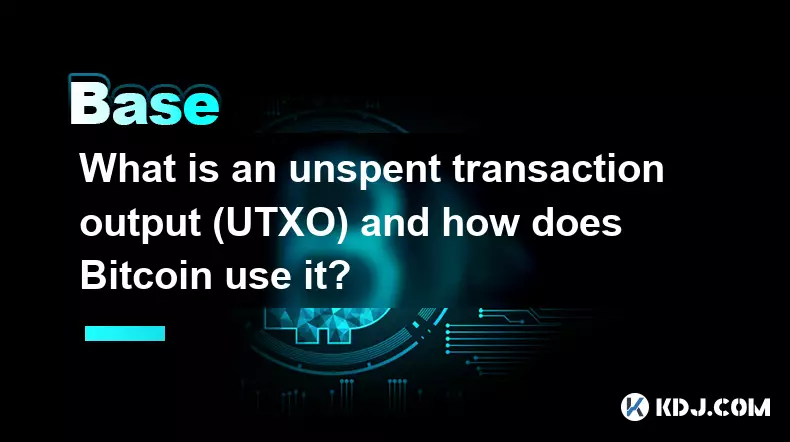-
 bitcoin
bitcoin $94896.319736 USD
-0.39% -
 ethereum
ethereum $3130.546781 USD
-0.60% -
 tether
tether $0.999368 USD
-0.10% -
 xrp
xrp $2.232415 USD
1.03% -
 bnb
bnb $931.833054 USD
0.53% -
 solana
solana $138.573946 USD
-0.08% -
 usd-coin
usd-coin $0.999844 USD
-0.08% -
 tron
tron $0.292320 USD
-0.61% -
 dogecoin
dogecoin $0.159558 USD
-1.12% -
 cardano
cardano $0.489320 USD
-1.89% -
 hyperliquid
hyperliquid $38.634250 USD
0.58% -
 zcash
zcash $700.952791 USD
3.30% -
 bitcoin-cash
bitcoin-cash $486.511218 USD
-3.00% -
 chainlink
chainlink $13.831174 USD
-1.13% -
 unus-sed-leo
unus-sed-leo $9.209054 USD
0.47%
What is DePIN (Decentralized Physical Infrastructure Networks) and what problems does it solve?
DePIN leverages blockchain to democratize infrastructure, enabling decentralized networks for connectivity, energy, and data through tokenized incentives.
Nov 11, 2025 at 01:20 pm

Understanding DePIN: A New Paradigm in Infrastructure
1. Decentralized Physical Infrastructure Networks, commonly known as DePIN, represent a transformative model that leverages blockchain technology to incentivize individuals and organizations to contribute to real-world infrastructure. Unlike traditional centralized models where governments or large corporations own and manage physical assets, DePIN enables a distributed network of participants to deploy, maintain, and operate hardware such as wireless nodes, sensors, storage devices, or energy grids.
2. These networks use crypto-economic incentives to reward contributors with tokens for providing services like bandwidth, computing power, or data collection. This creates a self-sustaining ecosystem where users are both service providers and beneficiaries. The transparency and immutability of blockchain ensure trustless coordination among participants, reducing reliance on intermediaries.
3. One of the core innovations of DePIN is its ability to align economic incentives with public utility. Participants are motivated not only by financial returns but also by the collective benefit of improved infrastructure coverage and reliability. This alignment fosters organic growth, especially in underserved regions where conventional investment may be lacking.
4. By tokenizing contributions, DePIN introduces a new layer of accountability and efficiency. Each action—such as installing a sensor or relaying internet traffic—can be verified on-chain, ensuring fair distribution of rewards. This mechanism significantly lowers barriers to entry, allowing anyone with compatible hardware to join the network and earn passive income.
5. The integration of smart contracts automates governance and payout processes, minimizing administrative overhead. Protocols can dynamically adjust reward rates based on demand, congestion, or geographic gaps, enabling real-time optimization of resource allocation across the network.
Problems Addressed by DePIN in the Real World
1. Traditional infrastructure development often suffers from inefficiencies due to bureaucratic delays, monopolistic control, and underinvestment in rural or low-income areas. DePIN directly tackles these issues by democratizing access to infrastructure deployment and monetization. Instead of waiting for top-down initiatives, communities can self-organize and build solutions tailored to their specific needs.
2. In telecommunications, for example, large carriers dominate spectrum usage and pricing, leaving many regions with poor connectivity. DePIN-based wireless networks allow local entrepreneurs to set up hotspots and share unused bandwidth, expanding coverage while earning tokens. This peer-to-peer model disrupts the status quo and promotes digital inclusion.
3. Environmental monitoring systems traditionally rely on expensive, government-funded installations. With DePIN, citizen scientists can deploy low-cost air quality or water sensors and feed data into decentralized platforms. Their contributions are validated and rewarded, leading to denser, more accurate datasets than centralized efforts could achieve alone.
4. Energy distribution faces challenges related to grid resilience and renewable integration. DePIN enables decentralized microgrids where households with solar panels sell excess power directly to neighbors via blockchain-enabled meters. This reduces transmission losses and enhances energy security during outages.
5. Data ownership is another critical issue. Centralized entities often exploit user-generated data without compensation. DePIN flips this model by giving individuals sovereignty over their data and allowing them to profit when it's used for research, advertising, or urban planning—provided they consent.
Key Sectors Impacted by DePIN Adoption
1. The Internet of Things (IoT) benefits immensely from DePIN’s architecture. Millions of connected devices generate vast amounts of data, but current infrastructures struggle with scalability and trust. By decentralizing data routing and storage, DePIN ensures faster processing, reduced latency, and enhanced privacy through cryptographic verification.
2. Cloud computing is undergoing disruption as DePIN projects offer decentralized alternatives to AWS or Google Cloud. Users rent out idle hard drive space or GPU power in exchange for tokens, forming a global marketplace for computational resources. This leads to lower costs and greater redundancy compared to centralized server farms.
3. Transportation and mobility networks are being reimagined through DePIN. Autonomous vehicle fleets, drone delivery systems, and smart traffic management can operate on shared, open-source frameworks where operators earn tokens for contributing location data or maintaining charging stations.
4. Supply chain logistics gain transparency through DePIN-integrated tracking devices that record shipment conditions—temperature, humidity, movement—on an immutable ledger. Stakeholders verify authenticity and compliance without relying on third-party auditors, reducing fraud and improving traceability.
5. Urban planning becomes more participatory as citizens contribute geospatial data via mobile apps or edge devices. Municipalities access richer datasets to optimize public transit routes, waste collection schedules, or emergency response strategies—all powered by community-driven DePIN ecosystems.
Frequently Asked Questions
What types of tokens are used in DePIN networks?DePIN ecosystems typically utilize utility tokens that serve multiple functions: rewarding node operators, facilitating governance votes, and paying for services within the network. Some projects also implement dual-token models, separating governance rights from operational incentives to balance stability and decentralization.
How do DePIN networks ensure data accuracy and prevent fraud?Data integrity is maintained through consensus mechanisms and reputation scoring. Multiple nodes validate inputs, and anomalous readings are flagged using statistical analysis. Operators with consistent, high-quality contributions build reputational capital, which influences their eligibility for higher rewards.
Can DePIN replace traditional ISPs and telecom companies?While full replacement remains a long-term possibility, DePIN currently complements existing providers by filling coverage gaps and lowering entry costs. As adoption grows and network density improves, certain regions may see DePIN become the primary source of connectivity, particularly in developing economies.
Disclaimer:info@kdj.com
The information provided is not trading advice. kdj.com does not assume any responsibility for any investments made based on the information provided in this article. Cryptocurrencies are highly volatile and it is highly recommended that you invest with caution after thorough research!
If you believe that the content used on this website infringes your copyright, please contact us immediately (info@kdj.com) and we will delete it promptly.
- BlockDAG's Hype is Real: Presale Success and Future Potential
- 2025-11-17 12:00:02
- MSTR's Bitcoin Strategy: Jeff Dorman Defends the Play Amidst Skepticism
- 2025-11-17 11:35:01
- DGRAM, Binance Alpha, and the Listing Buzz: What's the Hype?
- 2025-11-17 11:55:01
- Kava vs. Blazpay: Why Crypto Investors Are Eyeing the Next Big Thing
- 2025-11-17 11:40:02
- Pi Coin Price Increase: What's Driving the Crypto Buzz?
- 2025-11-17 12:25:01
- Antiques Roadshow: Dad's Unusual Coin Collection Nets a Shocking Price Tag!
- 2025-11-17 10:00:02
Related knowledge

What is the difference between a transparent and a shielded transaction?
Nov 10,2025 at 05:59pm
Understanding Transparent Transactions in Cryptocurrency1. Transparent transactions are the standard form of transaction on most public blockchains li...

What is a "crypto airdrop farmer" and what strategies do they use?
Nov 09,2025 at 03:39pm
What Is a Crypto Airdrop Farmer?1. A crypto airdrop farmer is an individual who actively participates in blockchain projects to qualify for free token...

What is an unspent transaction output (UTXO) and how does Bitcoin use it?
Nov 12,2025 at 01:40am
Understanding the Concept of Unspent Transaction Output (UTXO)1. An Unspent Transaction Output, commonly referred to as UTXO, is a fundamental compone...

What is a "governance attack" and how can a DAO be compromised?
Nov 14,2025 at 05:59am
Understanding Governance Attacks in Decentralized Autonomous Organizations1. A governance attack occurs when an individual or group gains disproportio...

How do you track a crypto portfolio across multiple wallets and chains?
Nov 12,2025 at 04:19pm
The Evolution of Decentralized Exchanges in the Crypto Ecosystem1. Decentralized exchanges (DEXs) have transformed how users trade digital assets by r...

What is a "rug pull" clause in a smart contract and how can you spot it?
Nov 14,2025 at 11:40pm
Understanding the Concept of a Rug Pull in Decentralized Finance1. A rug pull refers to a malicious act in the cryptocurrency space where developers a...

What is the difference between a transparent and a shielded transaction?
Nov 10,2025 at 05:59pm
Understanding Transparent Transactions in Cryptocurrency1. Transparent transactions are the standard form of transaction on most public blockchains li...

What is a "crypto airdrop farmer" and what strategies do they use?
Nov 09,2025 at 03:39pm
What Is a Crypto Airdrop Farmer?1. A crypto airdrop farmer is an individual who actively participates in blockchain projects to qualify for free token...

What is an unspent transaction output (UTXO) and how does Bitcoin use it?
Nov 12,2025 at 01:40am
Understanding the Concept of Unspent Transaction Output (UTXO)1. An Unspent Transaction Output, commonly referred to as UTXO, is a fundamental compone...

What is a "governance attack" and how can a DAO be compromised?
Nov 14,2025 at 05:59am
Understanding Governance Attacks in Decentralized Autonomous Organizations1. A governance attack occurs when an individual or group gains disproportio...

How do you track a crypto portfolio across multiple wallets and chains?
Nov 12,2025 at 04:19pm
The Evolution of Decentralized Exchanges in the Crypto Ecosystem1. Decentralized exchanges (DEXs) have transformed how users trade digital assets by r...

What is a "rug pull" clause in a smart contract and how can you spot it?
Nov 14,2025 at 11:40pm
Understanding the Concept of a Rug Pull in Decentralized Finance1. A rug pull refers to a malicious act in the cryptocurrency space where developers a...
See all articles










































































